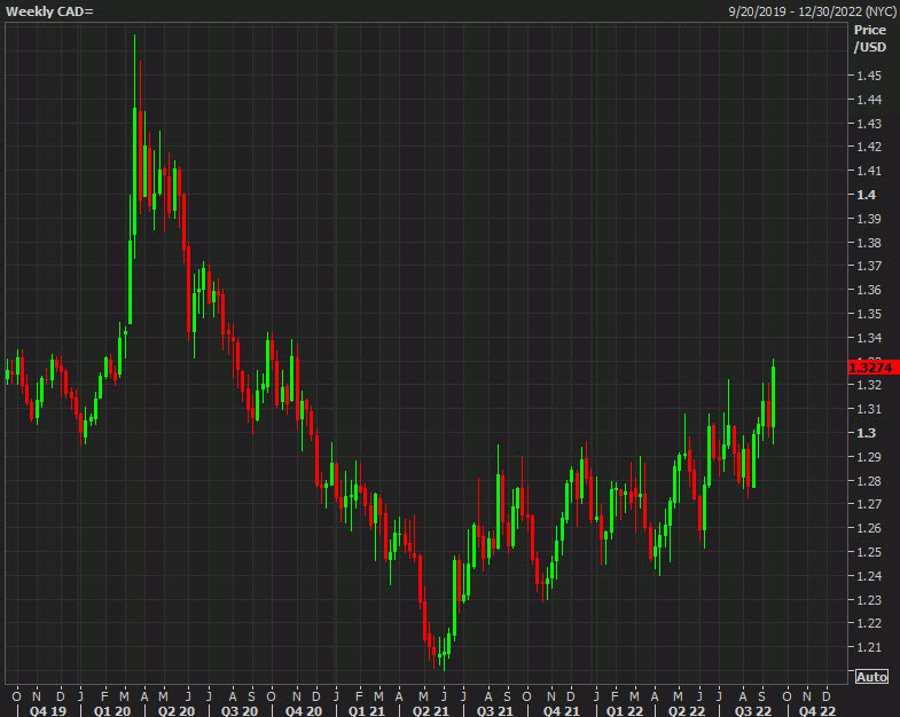The Canadian dollar is at an interesting spot on the global spectrum of risk assets at the moment.
Domestically, it’s been a good year with strong GDP growth as the economy reopened from covid. Commodity investment has picked up and terms of trade have improved.
For much of the year, that kept the loonie neck-and-neck with the US dollar as the top G10 performer. Lately though, it’s lost some ground.
Some of that is domestic. The two most-recent Canadian jobs reports have been soft and there have been other signs of creeping demand. House prices are down around 15% from the February peak as well, though still up around 5% y/y.
I don’t think those factors are having a big effect on the loonie. Instead, it’s intensifying worries about the global economy and rate differentials that are weighing.
Yesterday’s warning from FedEx on global macro deterioration speaks to the mood of the market. Global equities struggled all week and the market can’t see past the energy crisis in Europe or covid-zero in China. High commodity prices and inflation are also wreaking havoc on emerging market growth.
Rate differentials an emerging factor
It’s critical to understand the differences in the US and Canadian housing market. Rate hikes in Canada hit the consumer harder and more directly than in the US. Canadians either have fixed rates with 5-year terms or variable rates that adjust immediately. Contrast that with the US where mortgages have fixed rates for 30 years.
That means that many Canadians are directly feeling the pinch from higher rates while the only Americans who feel it are those moving or buying a home for the first time. In practice, it means that Bank of Canada will struggle to get above 4% while the Fed will have more latitude.
Before this week, both were expected to pause around 4% but now Fed funds are pricing in 4.40% in March. That’s creating a central bank divergence and cleared the way for a break above 1.32 in USD/CAD. I continue to think the destination is 1.37.
In the longer term, there’s mounting evidence hat commodities will be in short supply in the back half of this decade and that makes Canada one of the best places to be. Over the next year though, that’s not the case. North America is slowing down and central banks everywhere are raising rates at an unprecedented pace. There’s a real chance of a policy mistake and recession everywhere.
